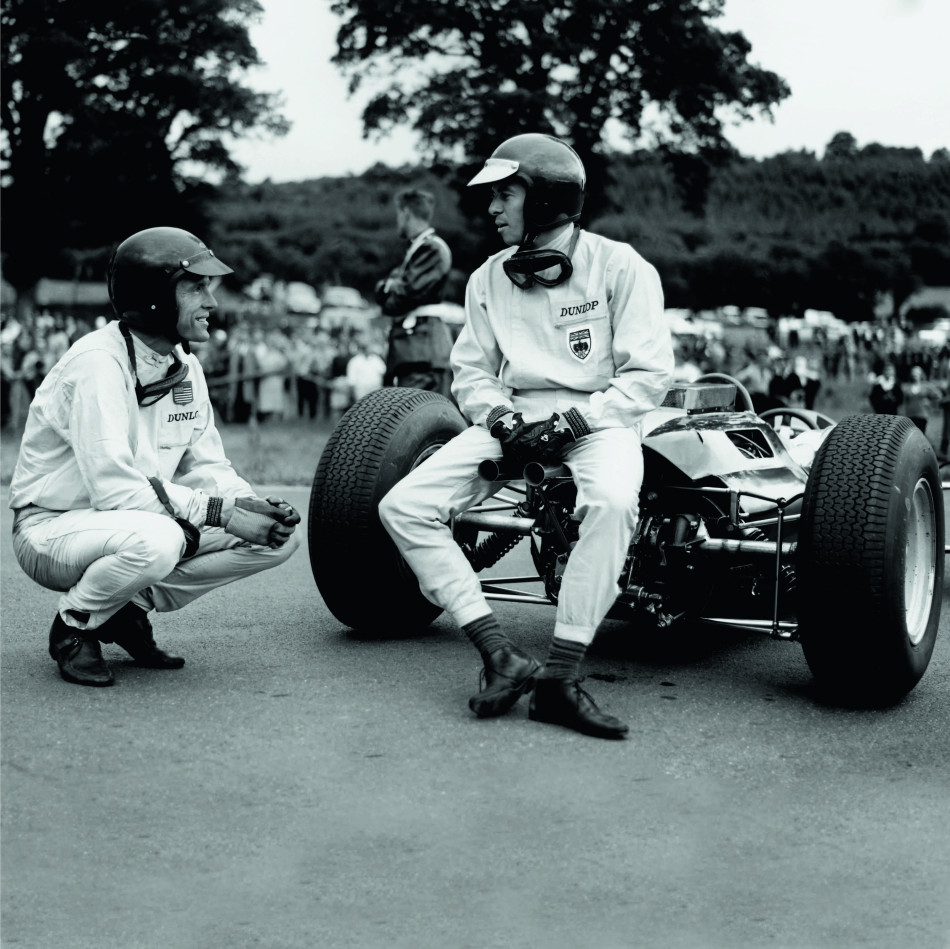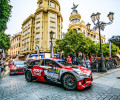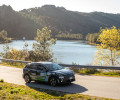From Auto #17: The unflappable Mr Gurney
Throughout an impressive and diverse motor racing career, American Dan Gurney has kept his cool as a driver, team boss and pioneering engineer

The photo lives in immortality: Dan Gurney, squatting on the track at Spa’s Stavelot corner, laughs as he chats with his friend, Jim Clark, who sits astride the exhausts of his Lotus 33. It is 1964 and Gurney has just lost the Belgian Grand Prix in dramatic style – after dominating the race from pole in his works Brabham. There is not a hint of disappointment after his last-lap retirement: Dan is instead captivated by the news over the PA system that both Graham Hill and Bruce McLaren have also failed to cross the line and that the winner, after running a lowly fourth for most of the afternoon, is none other than Clark – the driver who has also just cruised to a halt at Stavelot, fuel tank dry.
Many years later I ask him about that moment. Was he really that relaxed? Was the smile genuine? Was there truly no desire to throw down his helmet or rant and rave?
He smiles (again). “It was a shock not to win, of course it was, but there were no ‘Complaints Departments’ in those days so my attitude was ‘you might as well enjoy it’.”
It had been a rapid, if uneven, climb to Formula One. After his early days in New York and then Riverside, California, the Korean war interrupted Dan’s fledgling aspirations.
“At first I applied for Air Cadet Training to be a fighter pilot,” he remembers. “I passed all the tests and did well but then they discovered I was married and that was that. You weren’t allowed to fly with them if you were married. So then I joined the army for two years and for about 18 months I was in Korea, working as a gun mechanic with the 78AAA (Anti-Aircraft Artillery) Gun Battalion.”
Back home in Riverside, Dan “caught the virus” – his motor racing bug. A hot, self-tuned TR3 gave way to a flying Porsche Speedster. And, in the explosive hot-rod California of the 1950s, Gurney quickly befriended the likes of Phil Hill, who introduced him to Luigi Chinetti, Ferrari’s US importer. Several dynamic races later, in the spring/summer of 1958, Gurney found himself in Europe, watching the Race of Two Worlds at Monza while preparing for Le Mans and other big sports car events. He was at Reims when another tall American, Troy Ruttmann, raced a Centro Sud Maserati 250F in the French GP. Troy – as talented a driver as Dan had seen – returned quickly to the States, but Dan stayed on. F1 was the goal. And it evolved quickly. Mike Hawthorn abruptly retired in late
1958. Romolo Tavoni, Ferrari’s team manager, lost little time in signing Gurney as his replacement. He placed second in the 1959 German GP at Avus and third in Portugal.
Gurney switched to BRM for 1960, hoping that the British rear-engined cars would prove to be race winners – he was two years too early, however. He then drove for Porsche. The 1961 French GP at Reims came down to a slipstreaming duel between the American and Giancarlo Baghetti, which the Italian won by millimetres.
You look at some of the on-track moves of other drivers and you wonder whether Gurney might not have jinked a bit here, or moved a bit there, in order to take the win. Not a bit of it.
“The consequences of causing an accident in those days would often result in a funeral,” he says. “So we felt that if we couldn’t beat him the right way we’d just let the cards fall where they may.”
GREATEST DRIVE
The straight flush came at Rouen in 1962, when Gurney won his (and Porsche’s) first Grand Prix. He followed this later in the year with perhaps his greatest drive. It was at the Nürburgring – the old 15-mile Nürburgring. And it was in the wet.
“The Porsche was very well-balanced for the dry,” he remembers. “But when it rained on Sunday I elected not to make any changes to the set-up. I figured that if I had no one in front of me I’d be okay. The reason I lost places to Graham [Hill] and John [Surtees] early on was that the main battery broke loose inside the car and tangled with my left leg. The way the Nürburgring was, I was concerned that the battery would put a hole in the fuel tank and start a barbecue.
“Eventually I found a way of holding the battery in position with my left leg while still being able to activate the clutch, but it took me a while and by the time I was ready to press on I’d lost about 17 seconds. I caught them both but I wasn’t able to pass them. It was just one of those could’ve, would’ve, should’ve days of racing...”
Gurney’s ability was outstanding: he managed that broken battery (and Dan was not small of limb), he was quick in the wet, quick in the dry, quick on fast corners, quick on slow ones. And he drove the cars his way, with his own, unusual steering position.
“In those days we didn’t have steering dampers and many of the tracks were pretty doggone rough. So creating a rigid framework from which you could work the steering wheel was very important. If you were going flat out through a rough section of track it helped if you had a good lock on things. So, if the steering wheel was a clock face, I used to position my right hand between one and two and my left between seven and eight, with my left elbow clamped into my ribcage. I wanted to be able to have my right hand at 12 o’clock when I was turning the car to the left, still sitting back in the seat. If you held your hands at, say, nine and three, or 10 and two, in the conventional way, you couldn’t get much strength there and in that position it was pretty easy for the bumps to feed back through your body.”
Gurney the driver now evolved into Gurney the (ever-creative) driver-engineer. He suggested to Colin Chapman that Lotus take an F1 car to Indianapolis after the 1962 US GP at Watkins Glen. Lotus did – and the rest is history. Thanks to Gurney’s spark and input, Jim Clark won the 1965 Indy 500 in a Lotus 38-Ford. A new era had begun in American single-seater circles.
He raced for Brabham from 1963-65, winning a second French Grand Prix and the Grand Prix of Mexico, then followed his heart by setting up his own team (in Santa Ana, California and Rye, East Sussex, England) to design and build his own F1 cars.
Thus was hatched All-American Racers (AAR) and the gorgeous, beak-nosed Eagle. In a golden few months, Dan won the 1967 Race of Champions, the Le Mans 24 Hours for Ford and the Belgian GP. In France, he popped the champagne and sprayed the bubbly, creating another unique tradition.
“We were up on this platform with lots of photographers below, so I just started spraying the magnum over them, covering all their lenses, and then decided to spray everyone else as well, including Henry Ford II, who was there with his new bride. I had to learn how to release lots of wonderful juice without using too much pressure...”
INVENTING HISTORY
It was, simply, the best of times. “In those days,” he says, “I was concerned with the reliability of most of the aircraft on which we flew and I often used to say to myself, ‘well, I haven’t won a GP yet with the car and I sure hope this plane is going to have a successful flight’. After the win at Spa, I said to myself, ‘if this plane goes down that’s okay by me; we’re in the record book’.”
Goodyear had been a major supporter of Gurney’s F1 Eagle project but now wanted to switch the emphasis towards Indy. Gurney’s American racing career began to soar at the expense of his European life (but not before he became the first driver to race in F1 with a full-face helmet – in Germany, 1968). He won a slew of NASCAR races at Riverside, recorded two second places at Indy – and AAR won prolifically in sports cars, TransAm and IMSA. It was while testing an Eagle Indycar that Dan also invented the Gurney Flap – a device that remains an integral part of modern motor racing.
“In the end it was down to necessity being the mother of invention,” he recalls. Bobby Unser and I were testing Indycars on the Phoenix oval. It was hotter than the dickens. After three days we were still way o the pace and right at the end of our ropes, just sort of sitting there, dejected. It was about 4.30 in the afternoon. I was sitting in this little trailer, trying to get some shade, and Bobby came up to me and said, ‘Boss, can’t you do something? You’re supposed to be coming up with stuff. Dangbust it! Can’t you come up with something?’ I was aware that the spoilers on cars – which Richie Ginther had had something to do with when he was at Ferrari, and I had played with on the Lotus 19 – wouldn’t work on a car without lots of bodywork but then I suddenly thought, ‘why don’t we put a spoiler on a wing?’
We looked around for some aluminium scrap, put a 90-degree bend in it and then pop-riveted it onto the top edge of the wing. When Bobby went out his lap times didn’t improve and I thought, ‘Well, there’s another failure’, but when he coasted in after six laps or so he asked me if anybody was watching out at Turn Four. I looked up and said, ‘No, there’s no one there. Why?’ Bobby said that the back end of the car was stuck so strong that he now had a huge push at the front. That was when we realised that we had accomplished something.”
Today, AAR still operates from the same Santa Ana business unit, building top-secret carbon drones for the US government, the landing gear for the SpaceX orbital craft and Dan’s pet Alligator (motorcycles). His second wife, Evi (whom he met when she was working for Porsche in 1962) has been busy for several years on Dan’s autobiography, and their two sons, Justin and Alex, are successful in their own rights: Alex is a former GrandAm Champion, Justin the COO of today’s AAR.
“I was lucky we didn’t get a patent for the flap all those years ago,” says Dan with that smile. “We probably would have made too much money and been obliged to retire.”
He drawls the r-word as if it’s the sort of virus he wouldn’t want to catch.

 Facebook
Facebook Twitter
Twitter






